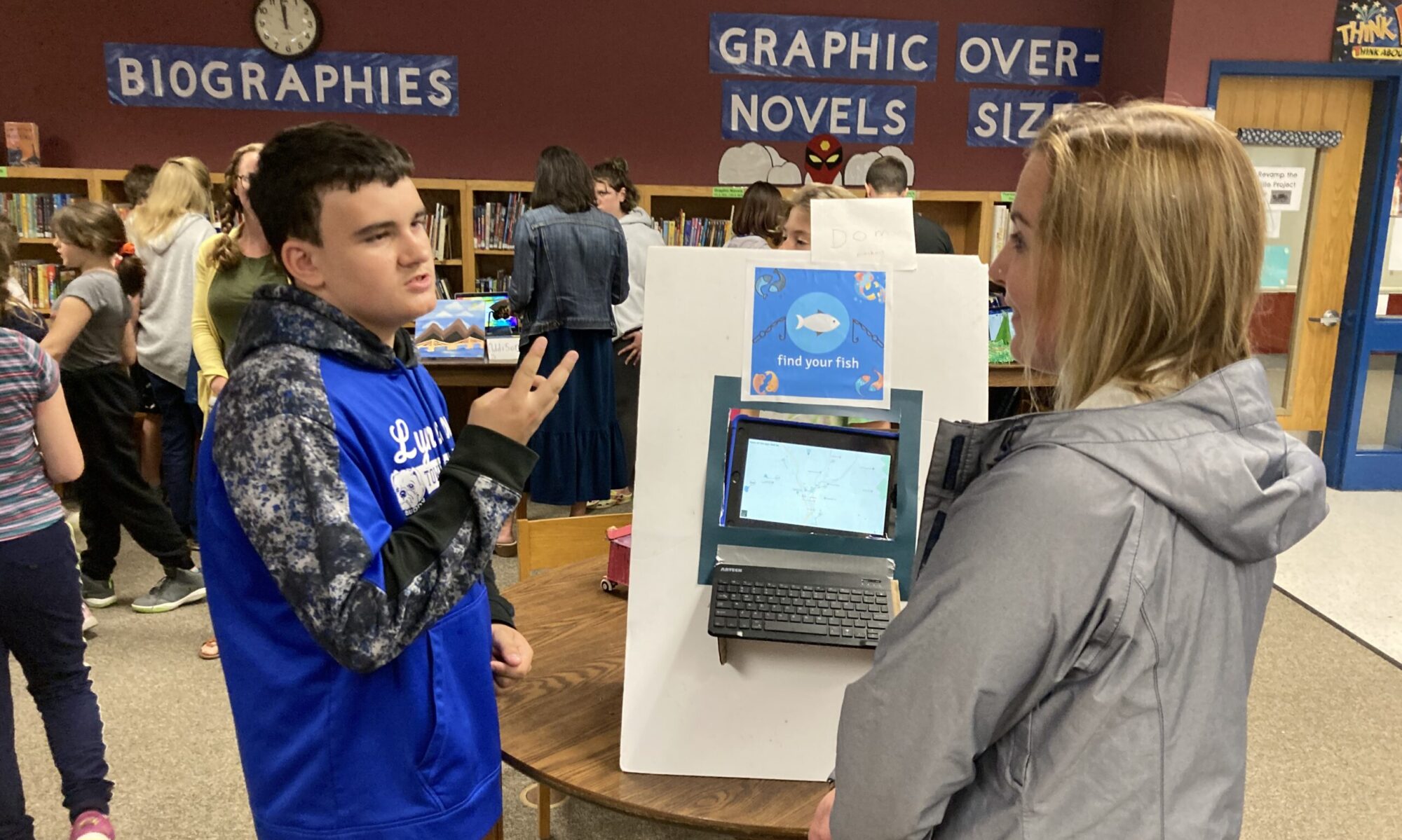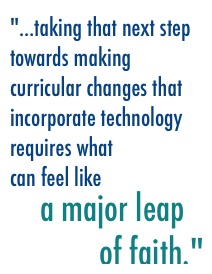Emily Howe joined the Tarrant Institute this past summer as our first ever pre-service teacher intern. She was instrumental in pulling off Code Camp, and actively assists in our research. For her first blog post, Howe answered the question:
Describe a situation in which you feel instruction could’ve benefited from the appropriate integration of technology. Was that technology accessible?
In response, she described a watershed moment for her during her placement in a local school.
This semester, I’m in my first placement for the secondary education program here at UVM. I’m in a middle school right now, and last week I was able to sit in on a common planning time meeting amongst the teachers on the team that I am observing. As a part of their physics unit, the students are working on a project where they have to construct a functioning trebuchet or catapult. During this meeting, one of the topics being discussed was how the teachers would assess the final projects; one idea was to have the students create a video about their device.
The logistics of this type of assessment became an immediate concern.
How would the students film their catapult in action? What kind of camera would they use? Would an iPad suffice? What about editing? Are the students proficient enough in the use of these kinds of technology to execute a final product? Do the teachers know enough about it to offer adequate support? Would this just further (and perhaps unnecessarily) complicate an already difficult task?
My time in the classroom was up before a final conclusion was reached, but this conversation got me thinking about how education technology really looks and operates in practice.
While it is easy to argue for the integration of technology into the physical space of a classroom, it’s certainly harder to execute this integration into the curriculum itself.
And while I understand that it is kind of a no-brainer statement to make (I mean as with anything, it tends to be easier to talk about something than to put it into action), you could call this my lightbulb moment when it comes to education and technology.
That being said, I’d argue that my belief in the value of integrating technology at a curricular level isn’t a lofty or naive ideal.
And even if it is, I’d argue that it’s worth pursuing anyway.
In this particular classroom, laptops are frequently used to support inquiry based learning; combined with their use of a document camera and projector to display student work, it is clear that technology is an important part of how this team functions. But taking that next step towards making curricular changes that incorporate technology requires what can feel like a major leap of faith. In this specific instance, having the students make a video about their physics projects would create an opportunity for them to reflect on the learning process.
In addition to providing students with the proper technological tools, it would also be necessary to have instruction on how to film and edit videos. To do so would take time out of the classroom, require additional professional development, and necessitate access to a new set of resources, but the benefits are certainly significant.
Having this type of technology available in the classroom — and in the curriculum — would create a unique learning opportunity. Students would be able to elevate their inquiry-based learning and discover an entirely new cross-disciplinary connection between their video (the arts) and their physics projects (the sciences).
So, while it may be difficult to do, I believe this stands as an instance where the presence of technology could make a significant difference in student learning.
—
Emily Howe is pursuing a dual degree in Secondary Education and History with a minor in Special Education. She works with incoming first year students at UVM in the Honors College as a Peer Leader, and as a tutor in the UVM Writing Center. She’s also involved with Service TREK and Alternative Spring Break, and enjoys cooking, playing guitar, and going to Zumba classes in her spare time. You can reach Howe by email at ehowe2@uvm.edu.



